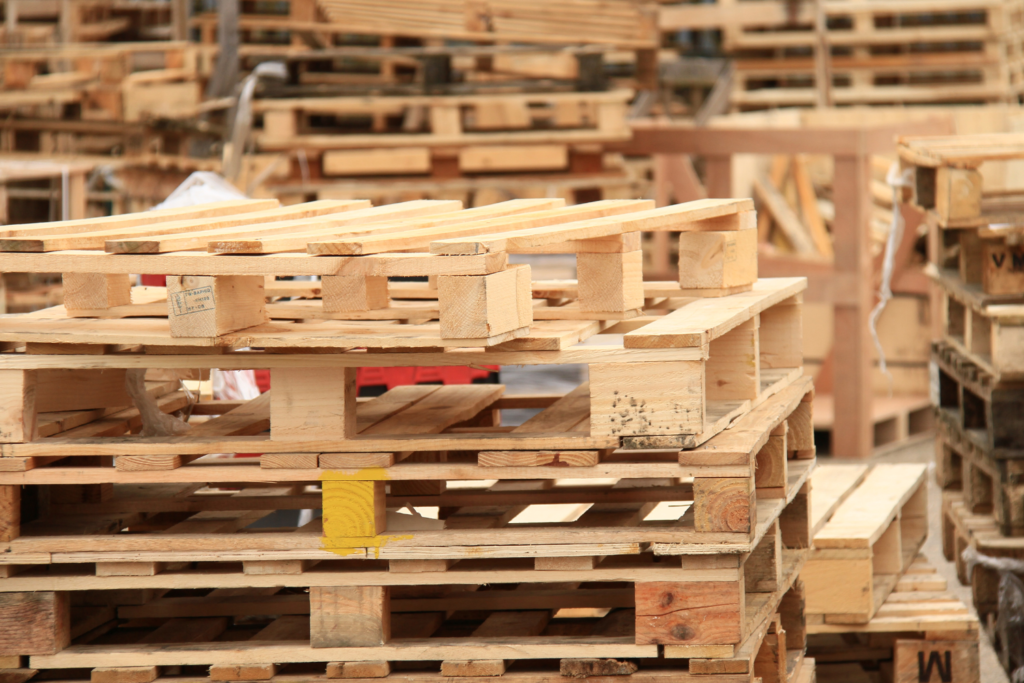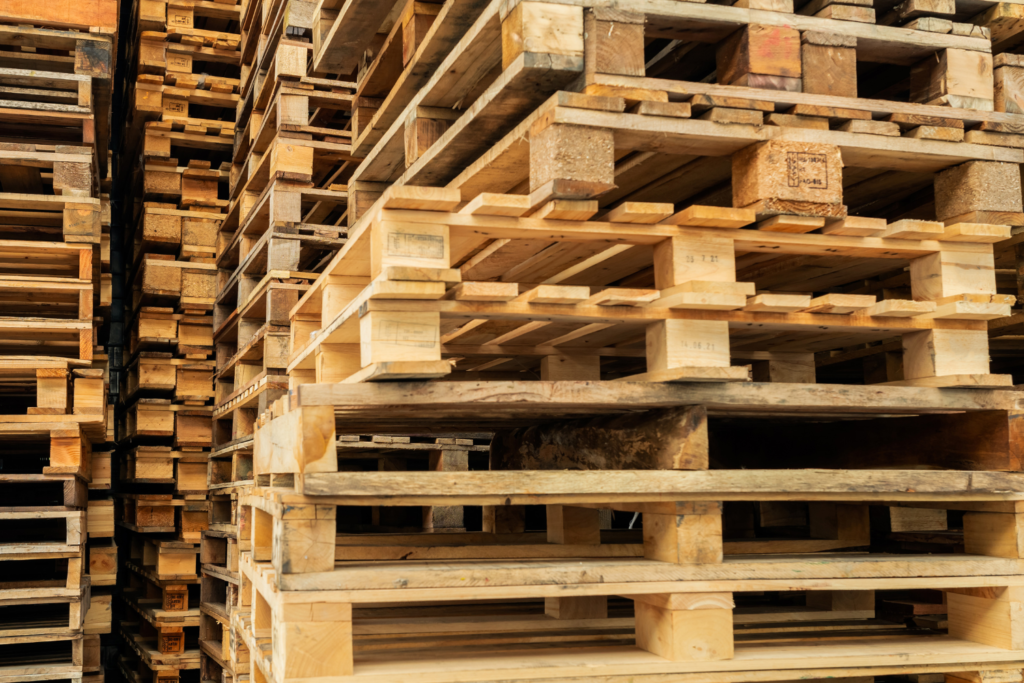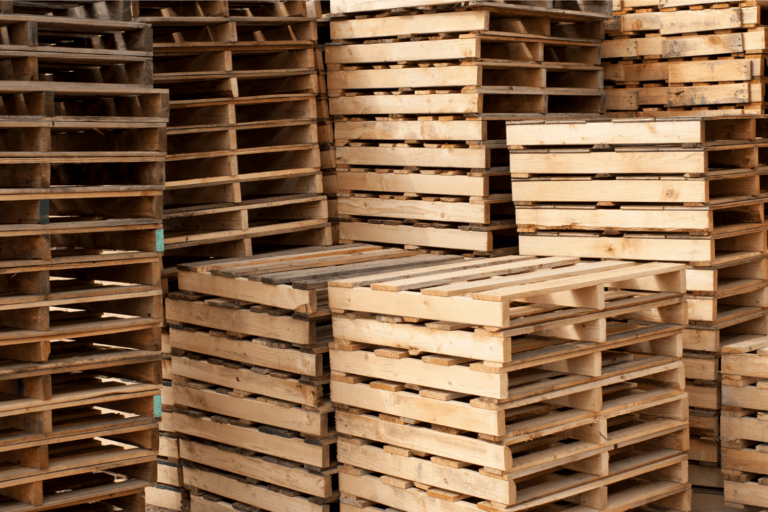Why are heat-treated pallets required for export?
The requirement for heat-treated pallets is driven by compliance with international standards such as ISPM15, set by the International Plant Protection Convention (IPPC).
ISPM15 mandates that all wood packaging materials used in international trade, including pallets, must undergo heat treatment or fumigation to prevent pest transmission.
Untreated wood can carry microorganisms that thrive in new environments, leading to the spread of diseases that threaten agriculture and biodiversity.
Learn more about heat-treated pallets below.
Why Are Heat-Treated Pallets Required for Export?
Heat treatment ensures compliance with international regulations, protects ecosystems, promotes safe handling, and enhances the durability of pallets used in export.
Below are reasons why heat-treated pallets are required for export.

1. Eliminates Pests, Larvae, and Eggs to Prevent the Spread of Invasive Species
Wooden pallets can harbor various insects or microorganisms within their fibers.
When they are heat-treated, they undergo a process where they are exposed to a high temperature, typically around 56°C (about 133°F), for a minimum of 30 minutes.
This controlled heating eradicates any living organisms, ensuring that insects, larvae, or eggs present in the wood are effectively destroyed.
It mitigates the risk of transferring non-native species to new environments.
Invasive species can wreak havoc on native ecosystems, often outcompeting local flora and fauna, or acting as carriers for diseases that can devastate agriculture and forestry sectors.
2. Reduces the Risk of Transferring Pathogens That Can Affect Ecosystems and Agriculture
The heat treatment process neutralizes the microorganisms present in wood, preventing their spread.
When pallets are exported, they are shipped to different regions with varying climates, biodiversity, and agricultural conditions.
Without proper treatment, they can serve as vectors for pathogens that may affect the health of plants, trees, and crops in the destination country.
Pathogens can severely damage agricultural productivity by spreading diseases among crops and plants or introducing pests that target specific species.

3. Meets the ISPM15 Requirements Set by the International Plant Protection Convention (IPPC)
The ISPM15 is an international standard established to prevent the spread of plant pests and diseases via wooden packaging materials.
It mandates that all wood packaging materials, including pallets, must undergo heat treatment or fumigation with methyl bromide.
However, due to the environmental concerns associated with chemical fumigation, heat treatment is the more widely accepted method.
Heat-treated pallets bear a specific mark, known as the ISPM15 stamp, which assures regulatory bodies in various countries that they have been properly treated.
Without the ISPM15 mark, shipments may be delayed, rejected, or even destroyed at the port of entry.
4. Aligns with Import Regulations of Many Countries That Mandate Treated Wood Packaging
Many countries have strict regulations in place that require imported wood packaging materials to be free from pests, insects, and diseases.
These regulations aim to protect domestic agricultural industries and natural ecosystems from foreign threats.
Heat-treated pallets are often a mandatory requirement for entering these markets. Non-compliance can result in fines, penalties, or shipment rejections.

5. Avoids the Use of Harmful Chemicals, Ensuring Safety for Handlers
Traditional fumigation processes often involved the application of chemicals like methyl bromide, which, while effective against pests, posed risks to human health and the environment.
Methyl bromide is known to be toxic and can cause respiratory problems or other health issues for individuals handling chemically treated pallets.
Heat treatment, on the other hand, uses a non-toxic method that involves exposing the wood to a controlled level of heat.
This ensures that the pallets remain safe to touch and handle, providing a safer working environment for those involved in loading, unloading, and transporting the goods.
6. Eco-friendly Process That Doesn’t Harm the Ozone Layer or Leave Chemical Residues
The use of methyl bromide in fumigation has been known to contribute to ozone depletion.
With increasing global awareness about environmental preservation and the reduction of ozone-depleting substances, heat treatment offers a sustainable alternative.
The process simply uses heat and doesn’t leave any residual chemicals within the pallet. It also doesn’t release harmful substances into the atmosphere.
7. Enhances the Longevity of Pallets by Making Them Resistant to Pests
When pallets are treated, the high temperature penetrates the wood thoroughly, killing off any existing pests and making it harder for future infestations to occur.
This resistance to pests not only ensures compliance with export regulations but also increases the lifespan of the pallets.

Conclusion
Heat-treated pallets are required for export primarily to prevent the spread of invasive species and protect global ecosystems.
Wooden pallets can harbor pests, larvae, and eggs that, if transported to new regions, could lead to the introduction of non-native species.
That can severely impact local ecosystems, outcompeting native species and spreading diseases that could disrupt the agriculture and forestry sectors.
If you need heat-treated pallets, check out our pallet products.
Chesapeake Pallets has been helping companies across the United States level up their logistics, one pallet at a time.
For inquiries, email info@chesapeakepallets.com or request a quote below!
















